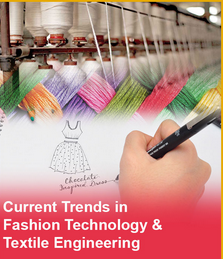The Appearance of Sustainable Fashion Products- Juniper Publishers
Journal of Fashion Technology- Juniper publishers
Abstract
Recent results of consumer studies are showing that consumers are becoming more aware and interested in environmental friendly products. Brands and their product developers are designing sustainable garments accordingly but might not be aware of the diverse customer requirements and sustainable importance. More care should be taken to select the most suitable design as products' physical attributes can influence the consumer perception. Thus, the need for an analysis of feelings and impressions given by the appearance of a sustainable fashion product is presented in this paper.
Keywords: Sustainable fashion; Perception; Consumer behaviour; Design; Appearance
Introduction
There are several terms for sustainable fashion, such as eco or ethical fashion, green fashion, conscious fashion, or slow fashion, just to name a few. Also, there are different methods such as the use of organic fibres or recycling of materials. All concepts have in common to reduce the negative environmental and social impacts of the fashion industry and its manufacturing processes as well as the impact of consumer behaviour towards fashion.
Sustainability in the fashion business has become a trend and crucial for brands and consumers. Big brands have officially committed to become more sustainable, such as Gucci who has announced to become fur-free beginning with their Spring-Summer 2018 collection. Studies show rising consumer awareness and interest in sustainable fashion. According to 'The Nielsen Global Survey of Corporate Social Responsibility and Sustainability' [1], the study in 2015 shows that consumers are buying more sustainable products and are willing to pay a higher price for eco attributes; corporate sustainability is especially beneficial for consumer brands, as they can see better growth through their commitment compared to their competitors without focus on corporate sustainability. Consumers are more conscious and demanding, and better informed [2]. However, this depends on the country and its development, and awareness can differ according to attitudes and values which can be analysed by using a cultural framework such as Hofstede's Cultural Dimensions [3].
On the one hand, new brands are offering environmental friendly and fair products; some existing companies are launching sustainable collections or improving their business by starting a recycling program or by collaborating with NGOs. Thus, sustainable requirements are becoming more important. But on the other hand, customers require products that are matching their price, brand or design expectations. Besides green, sustainable products need to be beautiful and suitable as well. Other external factors, such as convenience or social media and peer pressure have an influence on product perception and consumer behaviour. Furthermore, marketing and communication strategies can support the perception of products.
Despite all influences, the visual appearance is a critical factor [4]. The physical attributes of products influence consumers and their behaviour, such as the likelihood to purchase. The design of product attributes is an essential part in the product development process as product and consumer characteristics can have an impact on sales; in fashion forecasting, colour and design (pattern and other design elements) are critical but less researched [5]. The knowledge of product appearance can help companies to design products for environmental conscious consumers. Especially for sustainable products the eco-design should be emphasized [6]. Environmentally friendly products could appear sustainable but also attractive.
Consumer behaviour and mathematical models can help to measure data and to forecast product perception as well as to group customers with similar data sets into customer segments. Affective values can be measured through Kansei Engineering, a consumer oriented technology originated from Japan. Sustainable requirements have a big variety; attributes can be weighted according to their importance through the application of measurement techniques such as the Analytic Hierarchy Process (AHP) which was established by Saaty [7] or by using Fuzzy Set Theory [8]. Finally, environmental impacts can be measured through lifecycle assessment tools, measuring impacts from different categories such as the total raw material or resource consumption or atmosphere and water impacts. All these measurement techniques can help to analyse the fashion product and to conclude about consumer perception.
Conclusion
Consumer perception is subjective and might not correlate to the reality. For example, organic cotton is perceived as very environmentally friendly and natural, however it still can have a high impact on environment due to its high water usage through its lifecycle. The perception of an organic cotton product depends on knowledge and awareness of the consumer and on the products' characteristics as well as external factors as described before. Thus, to measure consumer perception it becomes important to observe the awareness of consumers towards sustainable fashion products and for example to understand why certain materials are perceived as more eco-friendly than others. A comparison of real lifecycle impact data and consumer perception of products can give valuable results.




Comments
Post a Comment